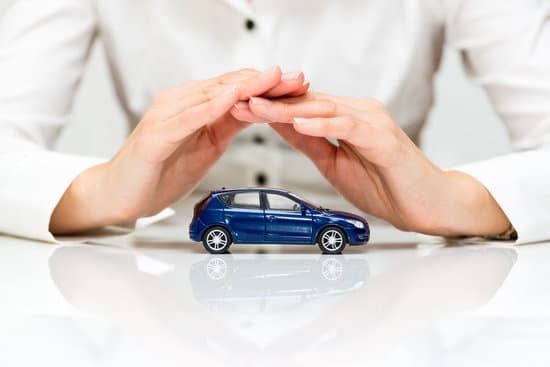What Is Liability Insurance and Why Is It Essential for Every Driver?

When you’re on the road, you’re responsible not only for your own safety but also for the safety of everyone around you. Accidents can happen anytime, and the costs associated with car accidents can be overwhelming, especially if you’re at fault. This is where liability insurance becomes crucial. Liability insurance is a type of auto insurance coverage that protects you financially if you’re responsible for an accident that injures others or damages their property.
This article will delve into the fundamentals of liability insurance, its importance, how it works, and why every driver should have it. Whether you’re a new driver or a seasoned one, understanding liability insurance will give you peace of mind and financial protection.
1. What Is Liability Insurance?
- Definition: Liability insurance is a form of car insurance that covers the costs associated with injuries and property damage caused to others when you are at fault in an accident.
- Purpose: It’s designed to protect drivers from financial losses if they cause harm to other people or their property.
- Types of Liability Insurance:
- Bodily Injury Liability (BIL): Covers medical expenses, lost wages, and pain and suffering of those injured in an accident you caused.
- Property Damage Liability (PDL): Covers the repair or replacement costs of property damaged in an accident, such as other vehicles, buildings, or fences.
2. How Does Liability Insurance Work?
- Coverage Limits: Liability insurance has coverage limits, usually represented as split limits (e.g., 25/50/10). Here’s what each number represents:
- Bodily Injury per Person: The maximum amount the policy will pay per person injured in an accident.
- Bodily Injury per Accident: The total maximum the policy will cover for all injuries in an accident.
- Property Damage per Accident: The maximum the policy will pay for property damage per accident.
- Claims Process:
- Incident Occurs: You are involved in an accident, and you are at fault.
- Report the Claim: You contact your insurance company and report the accident.
- Investigation: The insurer will investigate the accident and assess liability.
- Settlement: The insurance company will pay for damages and injuries up to the policy limits.
3. Key Components of Liability Insurance
- Bodily Injury Liability:
- Covers hospital bills, rehabilitation, and long-term medical costs.
- May include legal fees if the injured party sues.
- Property Damage Liability:
- Covers repair or replacement of damaged property (other vehicles, structures, etc.).
- Legal Defense: Liability insurance often includes legal defense costs if you’re sued after an accident.
4. Why Liability Insurance Is Essential for Every Driver
- 1. Financial Protection: Without liability insurance, you’d be personally responsible for covering medical bills and property damage costs, which can be devastatingly high.
- 2. Legal Requirement: Almost all U.S. states require drivers to have a minimum amount of liability insurance, making it illegal to drive without it.
- 3. Protection from Lawsuits: Liability insurance provides coverage for legal fees and settlements if the other party decides to sue.
- 4. Peace of Mind: Knowing that you’re financially covered in case of an accident allows you to drive with more confidence.
5. Liability Insurance Coverage Limits: Choosing the Right Amount
- State Minimum Requirements: Every state has its own minimum requirements for liability insurance, which may not always be enough to cover severe accidents.
- Recommended Coverage:
- For bodily injury, a minimum of $100,000 per person and $300,000 per accident is often recommended.
- For property damage, consider at least $50,000 per accident.
- Umbrella Policies: If you want extra protection beyond standard liability insurance, an umbrella policy can extend your coverage.
6. Common Myths About Liability Insurance
- Myth #1: Liability Insurance Covers Your Car Repairs
Fact: Liability insurance only covers damage to others’ vehicles or property, not your own. - Myth #2: Minimum Coverage Is Enough for Everyone
Fact: Minimum coverage may not be sufficient in cases of severe accidents, leading to out-of-pocket expenses. - Myth #3: Liability Insurance Covers Personal Injuries
Fact: It only covers injuries of others, not your medical expenses. For that, you’d need personal injury protection or medical payments coverage.
7. Consequences of Driving Without Liability Insurance
- Legal Penalties: Fines, license suspension, or even jail time in some states.
- Financial Liability: Full responsibility for damages and injuries, which could lead to significant debt or loss of assets.
- Increased Insurance Rates: If caught without insurance, future premiums can be substantially higher.
8. Liability Insurance for Different Types of Drivers
- New Drivers: Often need higher liability coverage due to lack of experience and increased risk.
- High-Risk Drivers: Those with past violations or accidents may need higher liability limits or even SR-22 insurance.
- Commercial Drivers: Business vehicles require commercial auto insurance, which includes liability tailored for business risks.
9. How to Save on Liability Insurance
- 1. Shop Around for Quotes: Compare multiple insurers for the best rates.
- 2. Opt for Higher Deductibles: If affordable, higher deductibles can reduce premiums.
- 3. Bundle Policies: Many companies offer discounts for bundling auto and home insurance.
- 4. Maintain a Good Driving Record: Clean records typically receive lower rates.
- 5. Take Defensive Driving Courses: Many insurers offer discounts to those who complete these courses.
10. Additional Tips for Choosing the Right Liability Insurance
- 1. Assess Your Financial Risk: Choose coverage limits that protect your assets in case of a severe accident.
- 2. Review Regularly: As life circumstances change (new job, new home), update your coverage.
- 3. Ask About Discounts: Good driver discounts, loyalty discounts, and multi-policy discounts can lower costs.
- 4. Understand Your Policy: Carefully review your liability limits, coverage options, and exclusions.
Conclusion
Liability insurance is more than just a legal requirement; it’s a financial shield that every driver needs to stay protected on the road. It covers the costs of injuries and damages you cause to others, protecting your assets and providing peace of mind. With liability insurance, you don’t have to face the potentially life-altering financial consequences of an accident alone. Make sure you understand your policy, choose adequate coverage limits, and drive responsibly—these steps will ensure that you’re protected in the event of an unexpected incident on the road.
Liability insurance is an investment in your security and peace of mind, ensuring that every journey is a safe one for both you and those around you.



